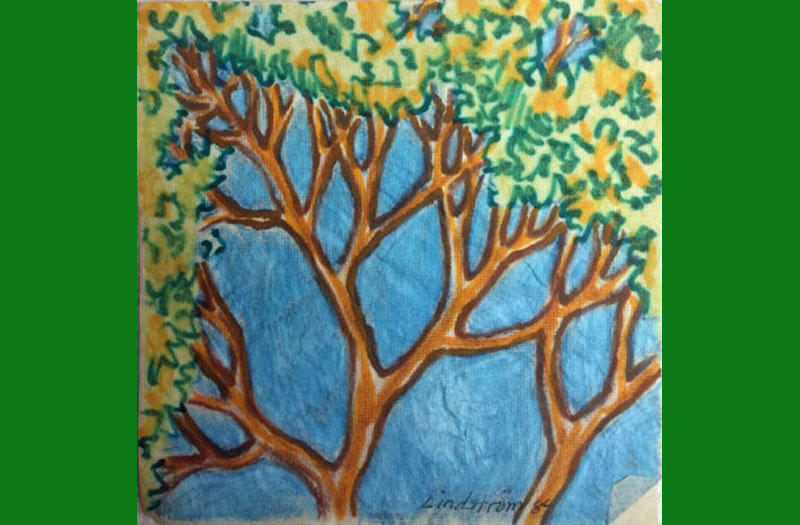[Click on BLUE links for sources and further information]
For Arbor Day I suggest reading The Tree by John Fowles. I was introduced to John Fowles by way of The Collector assigned by my college freshman English teacher (Mr. Wexler) many (too many) years ago. I was hooked. The French Lieutenant’s Woman, The Magus, Daniel Martin–these are a few other amazing works by this author of genius. Professor Wexler rode into the Stanford Quad on his motorcycle, jumped the curb and came to a screeching halt at the door of the classroom. He not only introduced us to Fowles but also to Philip Roth, John Knowles, and John Updike. Yes, it was an exclusively male group of authors that we read but they stood the test of time. The year was 1964 and all were just beginning their careers.
In Mexico, A Higher Vision, Carlos Fuentes quotes Einstein: “Geometry is not inherent in nature.” This phrase stuck in my mind the moment I read it. It is a central concept in The Tree.
In our last blog we wrote briefly about two books by Valeria Luiselli. In one of the articles about Luiselli we cited but did not quote she said:
I don’t think there is any such thing as “human nature” either. That idea presupposes that there is something before it actually exists—that we are one way or the other before actually manifesting any traits that suggest that way of being.
The statement may seem anathema to someone with a hard scientific bent but Fowles in The Tree provides an example of where nature is trumped by nurture:
The names of apples and pears are rather like the names for wines–no sure guide in themselves to quality. Two labels may read the same; but the two trees that wear them may yield fruit as different as a middling and a great vineyard from the same slope. Even the same tree can vary from year to year. As with the fine, the essential things are soil situation, annual climate; but after those factors, human care.
The Tree is filled with tasty observations like this one:
Successful artistic parents seem very rarely to give birth to equally successful artistic sons and daughters, and I suspect it may be because the urge to create, which must always be partly the need to escape everyday reality, is better fostered–despite modern educational theory–not by a sympathetic and ‘creative’ childhood environment, but the very opposite, by pruning and confining natural instinct. (Nine-tenths of all artistic creation derives its basic energy from the engine of repression and sublimation, and well beyond the strict Freudian definition of those terms.) That I should have differed so much from my father in this seems to me in retrospect not in the least a matter for Oedipal guilt, but a healthy natural process, just as the branches of a healthy tree do not try to occupy one another’s territory.
Fowles is no fan of the scientific technician as artist:
Evolution has turned man into a sharply isolating creature, seeing the world not only anthropocentrically but singly, mirroring the way we like to think of our private selves. Almost all our art before the Impressionists–or their St John the Baptist William Turner–betrays our love of clearly defined boundaries unique identities, of the individual thing released from the confusion of background.
It is this confusion of background in which Fowles revels. He doesn’t care for mere representational artists or formulaic authors.
It would be absurd to deny the Victorians their enormous achievements in saner scientific fields, and I am not engaging in some sort of Luddite fantasy, wishing the machine they invented had been different, or even not at all. But we are far better at seeing the immediate advantages of such gains in knowledge of the exterior world than at assessing the cost of them. The particular cost of understanding the mechanism of nature, of having so successfully itemized and pigeon-holed it, lies most of all in the ordinary person’s perception of it, in his or her ability to live with and care for it–and not to see it as a challenge defiance, enemy. Selection from total reality is no less necessary in science than it is in art; but outside those domains (in both of which the final test of selection is utility, or yield, to our own species) it seriously distorts and limits any worthwhile relationship.
The one sentence that stuck with me from this book turns man’s casual attitude toward the environment back on his head:
It is far less nature itself that is yet in true danger than our attitude to it.
At a mere 114 pages, this is a book you can read easily in an afternoon or an evening. You will benefit greatly if you choose to do so. You will benefit even more if you read it over and over again. Do it. For the trees.


Glad you are back.
I have not read the Fowles book. I will. One for you to read, if you haven’t already mi primo, to commemorate Arbor Day in April is ‘The Hidden Life of Trees: What They Feel, How They Communicate–Discoveries From A Secret World’ by John Wohlleben. As with Fowles no doubt, you will never look at trees the same way again. Wohlleben is a German forester and author.
https://www.amazon.com/Hidden-Life-Trees-Communicate_Discoveries-Secret/dp/1771642483/ref=sr_1_1?crid=1XZG0IMB8WILT&keywords=the+hidden+life+of+trees+by+peter+wohlleben&qid=1552016400&s=gateway&sprefix=the+hidden+life+of+t%2Caps%2C180&sr=8-1
I will definitely take a look. The Fowles book is as much about writing and art and philosophy as it is about trees. Be well mi primo and stay in touch.